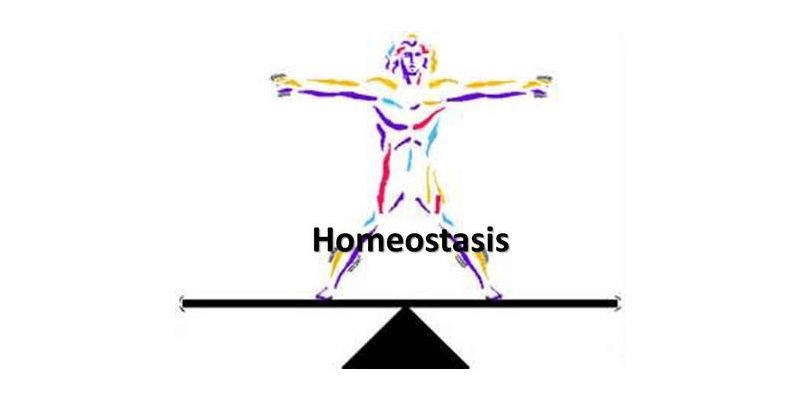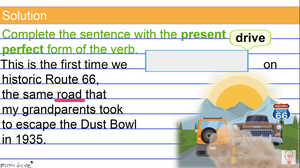Hi, uh, here's our classroom structure. We are gonna start with our warmup review, of what it means to maintain homeostasis that we did last class. And then our essential question for today is how do feedback mechanisms maintain homeostasis? That's a new term for us.
The feedback mechanism phenomenon today is the amazing trail. It's a plant. I have one for you. Can you see it? Uh, it's a house plant. I made these cuttings that I put in this little bottle with water. Um, they're gonna root and we'll use those in another lesson, but today we're gonna work with the leaf.
So I'm gonna show you some pretty cool qualities of this plant. Um, and that will show you a feedback mechanism that the plant has. And, um, all plants have this mechanism. It's just extra special in the tra scania because of its layers. Uh, then we're gonna use what you learn with the plant and put it together. Uh, kind of go backwards and figure out this is what the plant's doing to survive. And I can use that information to help you figure out the steps to the feedback mechanism.
And then you'll have a check for understanding. Um, you're gonna need to apply what you learned to a new situation. Um, and so here we go. Um, from yesterday's class, uh, you learned about homeostasis. I've got this little balance is my graphic. That's kind of to help wake up your brain there from yesterday. So think about last class and can you tell me in your own words, what does it mean to maintain homeostasis? So take a minute and think. Remember if you're drawing a blank, use your resources. Check it out in your notes. You, you've got this. Sometimes it takes a minute, especially with a weird word like homeostasis.
Okay? So very nice. Maintaining homeostasis is the process of keeping an internal environment that stays stable. Doesn't mean it doesn't change, but it provides stability. Here's some examples. Your body temp your blood pressure, your pulse rate, and those things change when they need them, when you need them to change. Uh, if you were to get scared, all of a sudden your pulse would increase, your blood pressure would go up to prepare you in case you had to runaway. That's part of maintaining homeostasis. Things change. Your body has to learn to adjust to it.

Okay, our essential question today is how do feedback mechanisms maintain homeostasis? So think about what that means in just plain old English, everyday English. What does the word feedback mean? Can you tell me what, what's your thoughts of if you think of that? Like if someone gives you feedback, what are they doing? Yep. You're getting information that someone's reaction to something and it's usually used to improve what you're doing. If you are a golfer and you practice the same golf swing over and over and over, you'll only know that existing golf swing. But if someone gives you feedback and explains something, then you can improve it. And a mechanism that's like a mechanical kind of word mechanism is just the parts that work together to make something move. I'm sorry to make something. Work movement is kind of my first thought when I hear of mechanism.
I think like the parts of a watch and how they work together. And next the amazing tra scania. Wait, wait for it. Here it comes again. That's just to show you how extra wonderful. It's, so this is the plant that we're gonna learn about today. And the cool thing about this is its leaves are in two layers, okay? And I've got some colored paper to represent those layers. But if you were to shine a light on a leaf, okay, so I'm gonna hold this up and this side has some green pigment and some purple, and this side is solid purple. Okay? Or so it seems if you put the light right on it, it might not be so perfectly clear on the screen, but if you put the light right on it, you'll be able to see variations in the purple. And that's because the bottom side of the leaf is filled with these little holes called show mates.
Okay? So I'm gonna give you a concrete example with the paper before I show you some pictures with the microscope. So if you've got the purple layer and the green layer of paper and you put one on top of the other, it's purple on one side, green on the other. But if you poke some holes in the purple, the green's gonna show through and that's what's gonna happen with this plant. It's one of the coolest plants to look at this straw meat because of the colors in the layers. Now the St mate is a opening in the bottom side of the leaf. All leaves have them, I'm gonna grab my leaf and its purpose is to be openings where gases and water can be exchanged. So think back to photosynthesis. What does the plant need? What do you have to do to get your garden to grow?
You gotta water it. And think of the gases. We cycle carbon with the plants. Plants need carbon dioxide and they are gonna release oxygen, some oxygen. They also need it too. Don't forget that piece bug. That's a little bit of review. We'll go back to that later. So if your plant is dry and it starts to wilt, or if the sun is very bright and it's warm and it's doing a lot of photosynthesis, there's gonna be changes in the leaf that are gonna upset homeostasis. So let's take a look. Alright, here is the opening. These little openings are the little green, uh, these green glowy things that you can see. Those are holes, okay? Holes in the purple under side of the leaf. And so the green pigment shows through once you shine light through it and you magnify it. Okay? So we're gonna blow it up a little bigger.
This is 40 x. So I pieces four. So we would be on the, the, the 10 power objective. So four times 10 would be 40. Just to review your microscope skills. Gotta keep 'em fresh. So see this little thing, it kind of looks like a long, oh, it's an opening. That opening is where gases and water are exchanged with the environment. Plants are constantly giving off water even though they use water. Um, very complicated biochemistry, but water is gonna leave the bottom of the leaf, okay? And sometimes that's fine, but sometimes it's not. So if the day is very dry, whoops, on a very dry day, do you see how there's just this tiny line across here where there used to be an opening? Now lemme show you 'em side by side. Okay? Here is the straw mate open. This is a very moist environment.
The plant has plenty of water and it's fine for water and, and to come and go. If the plant gets dry and it starts to get a little wilty, this this domain that is actually cells that are filled with water, they lose water and they're gonna kind of collapse on each other. And that is what closes this domain. Once it's closed, the plant won't lose anymore. Uh, water. It also can't exchange gases though. So it's catch 22 kind of a thing. If it doesn't have water, it's gonna die without the water and wilt. So photosynthesis, I'll have to get put on hold for a little bit. Okay? So it says question wise, and I want you to think about these uh, questions. One at a time, if the stone is closed, closed, what's gonna change in the leaf? So think about that for a minute. I kind of told you a little bit. I do that. I kind of give the answers away sometimes. Okay? And then think about what conditions would be in the environment to cause that to happen. And then what conditions would cause this do domain to open again? Okay, write your answers down, hold up your paper for me so I can see where you're at.
Thanks. So changes in the leaf is gonna be dry good. And um, conditions that could change. It could be very sunny and it could be a plant growing outside. It could be a plant indoors and you haven't watered it, uh, in a few days. Okay? And then for the stomate to open to return to this open position, it would just have to have enough water. Okay? So now we gotta figure out what does this have to do with a feedback mechanism that maintains homeostasis. So think about the golf swing again. So what you're doing wrong is what you would get information on. So what's kind of wrong with the plant, right? It's not getting enough water. If it loses too much water, it's gonna die. So it has to do something to correct the mistake. Just like you would correct your posture in a golf swing.
Or I shouldn't use sports metaphors cuz I don't really get 'em all the time. But I think that'll, I think that'll work so far. So let's put it all together. Now go back to the essential question. How to feedback mechanisms, maintain homeostasis. And let's figure out what happened in this domain. First it was open. Homeostasis is good, life is good. The plant's exchanging water and oxygen and carbon dioxide. Gases are going in and out. Water's coming out. Life is good, but for some reason there's reduced water in the leaf. That's the change that's going to disrupt homeostasis. So for the plant or any living thing to survive, it has to have a way of correcting itself When there's a change in the environment, in this case, this donates closed, prevented water from leaving the plant isn't gonna dry and wilt, it'll stay upright and things will be okay. It'll live off res uh, like reserves of sugar stuff that it has stored. And then the environment is gonna change back. You're gonna remember to water the plant and say this is a house plant. You'll remember to water it. Stone ate, gonna open again. This is an example of a feedback mechanism. So let's figure out what's happening.
So feedback mechanism stone ate is open, that's the normal state. Everything's good, life is good, but then you've got a reduced water in the leaf. So there's some kind of change detected in the environment. Then the stone mate closed. That's the action that you take to fix whatever went wrong. And then you water the plant, things go back to normal. So the normal state returns, so you have to stop fixing the problem. Okay? I'm gonna give you a household example. The thermostat, um, that controls your heat, that's a feedback mechanism. So you have it set at say 68 and there's a little bit of range up and down. It'll stay in the range of 68. So if it's 68, life is good, that's the normal state. But the furnace isn't pumping out any heat for a while and it's a colder day. And after a little bit goes down to 67, maybe 66, and all of a sudden the heat's gonna kick back on, right?
It got too low, a change was detected by the thermometer in the thermostat and it kicks the heat on. So it takes an action to fix. Here's the hard part. What if it just kept pumping out the heat? It'd go from 66 to 67 to 68. Usually it takes a little bit, uh, more than that to turn it off. So maybe 69 and then the normal state would return the, the heat is gonna stop being pumped out at that point in time, if this number four didn't happen, your house would just cook up more and more and more and more. So the interesting thing is you have to detect a change. You have to take an action to fix it, but once it's fixed you have to stop fixing it. And so the action that was taken will get cut off. Okay? So here's your job right now. Check for understanding. Describe how your body maintains homeostasis through a feedback mechanism when you exercise. Okay? So get a piece of paper and a pencil.
Okay? Here are those steps again, 1, 2, 3, and four. And I want you to give me a concrete example. The normal state is you think, hmm, I should exercise. You're at a normal level, okay? Then you're gonna have a change. You're gonna have to take an action to fix it. And then you're gonna have to tell me how you get back to the normal state and your body stops fixing it. Okay? I want you to apply that specifically to exercising. You can make a little note here, you could draw it in a cycle. Tell me what's happening. You could draw a picture and label the steps, whatever you wanna do. But I need you to get that written. I'll give you a couple of minutes to think about that and then, um, I'd like you to show them to me and also take a picture and turn them in. Okay? Thanks so much.






